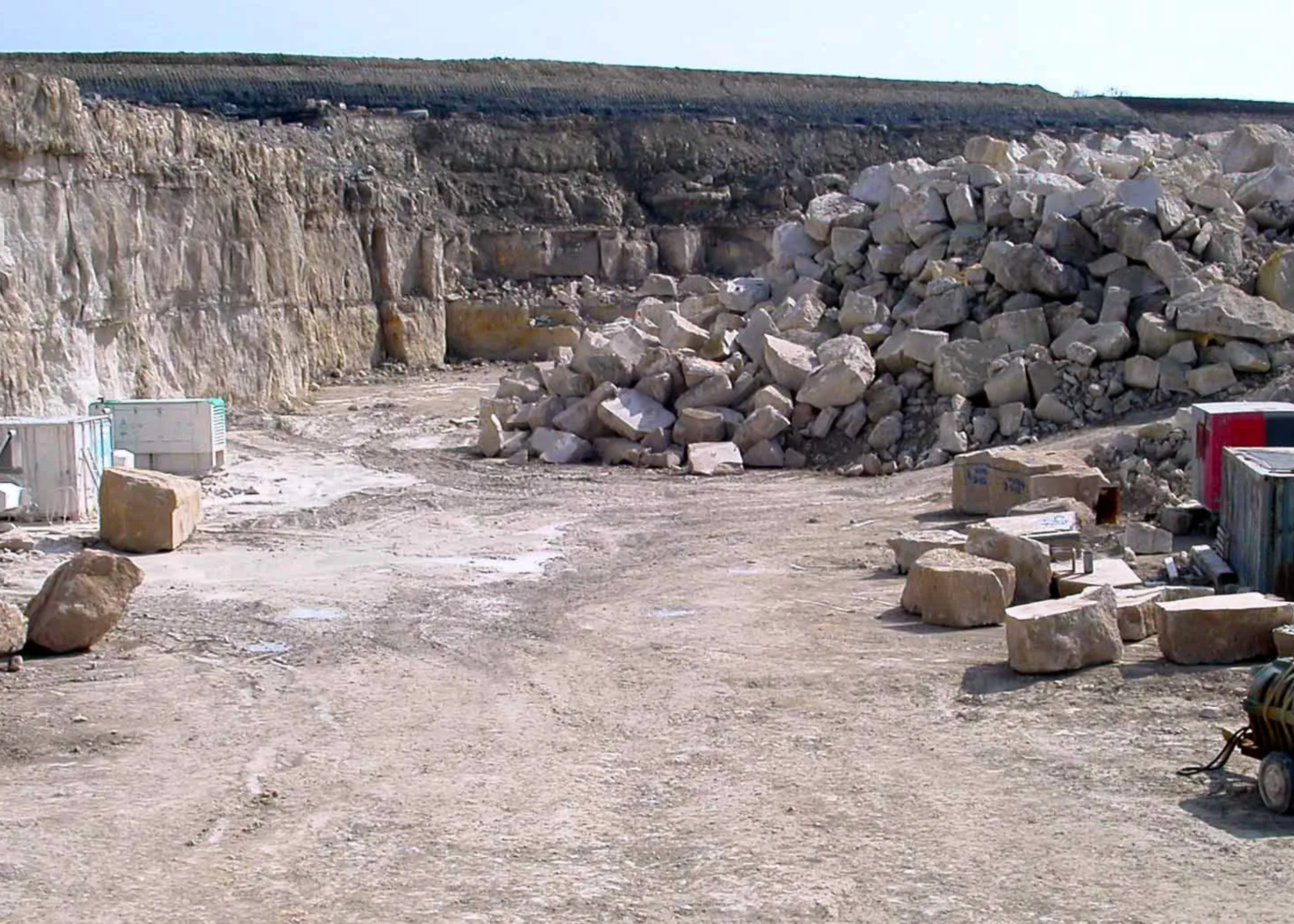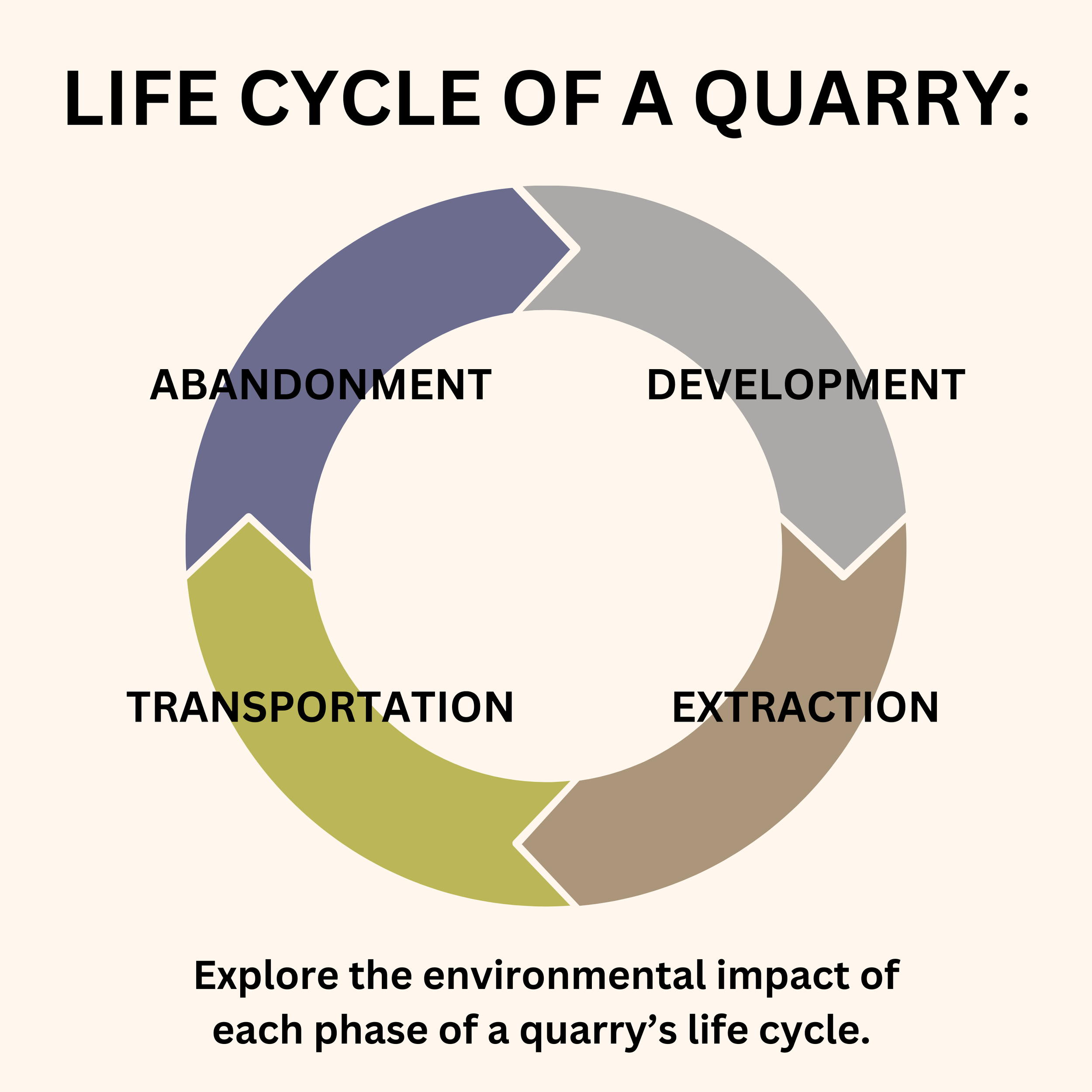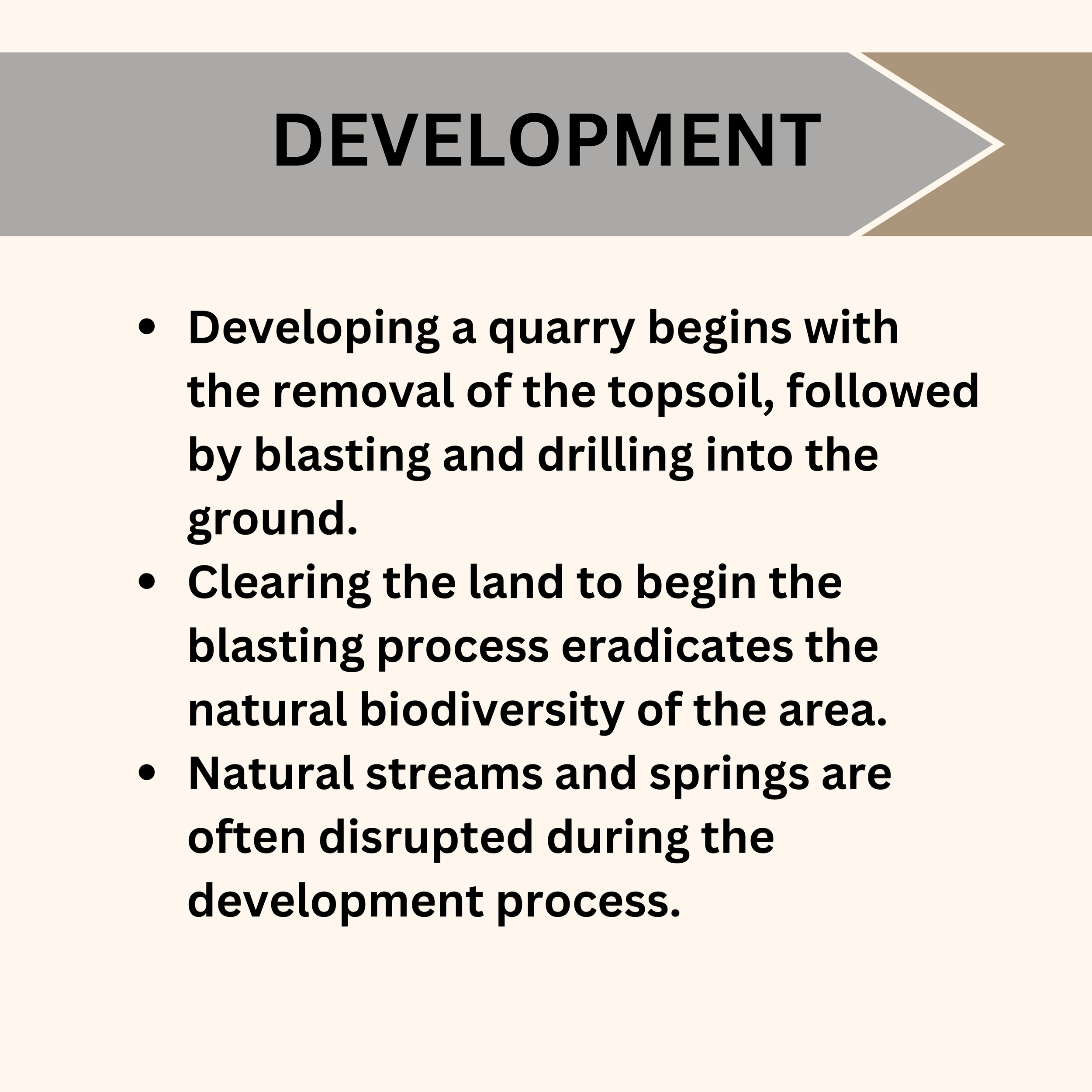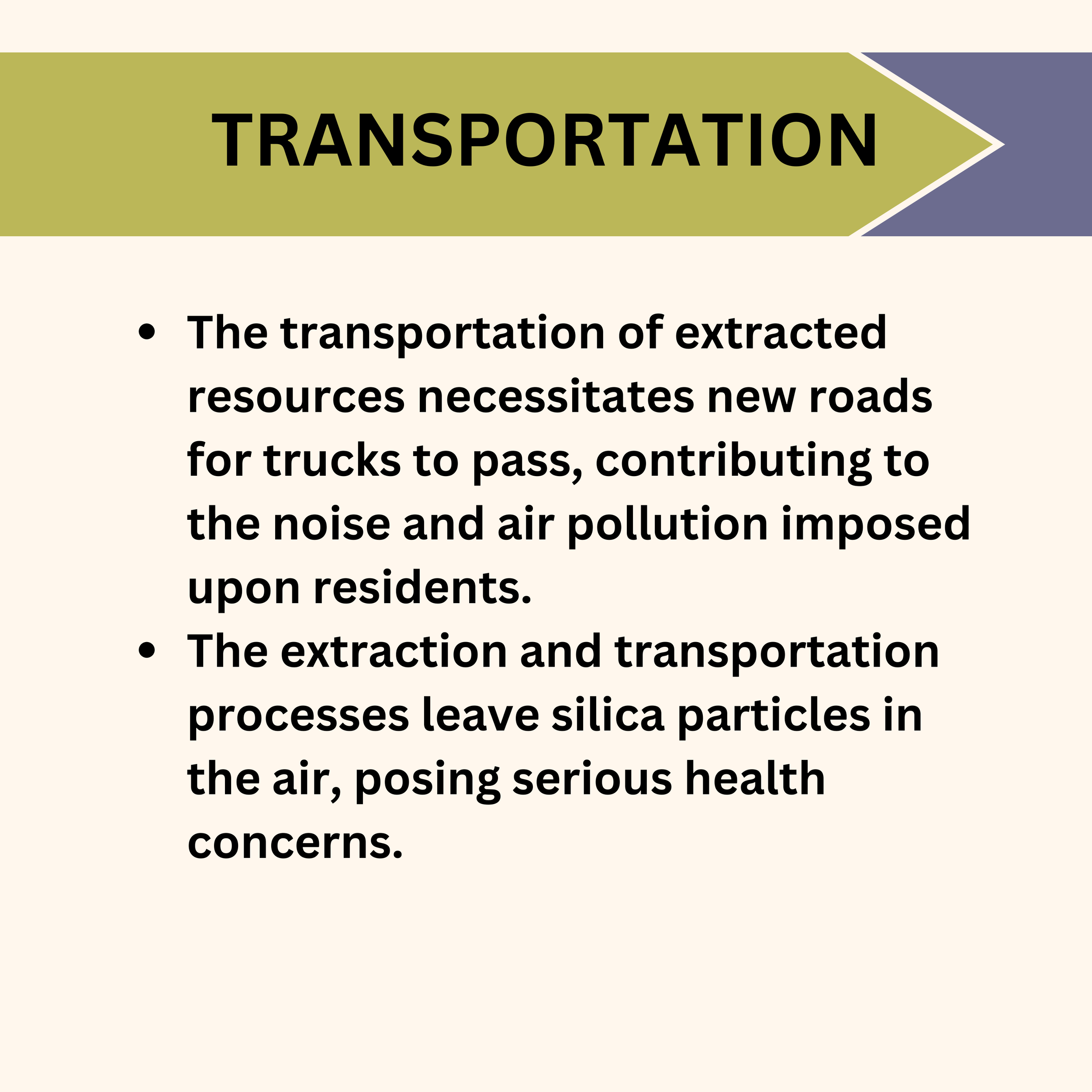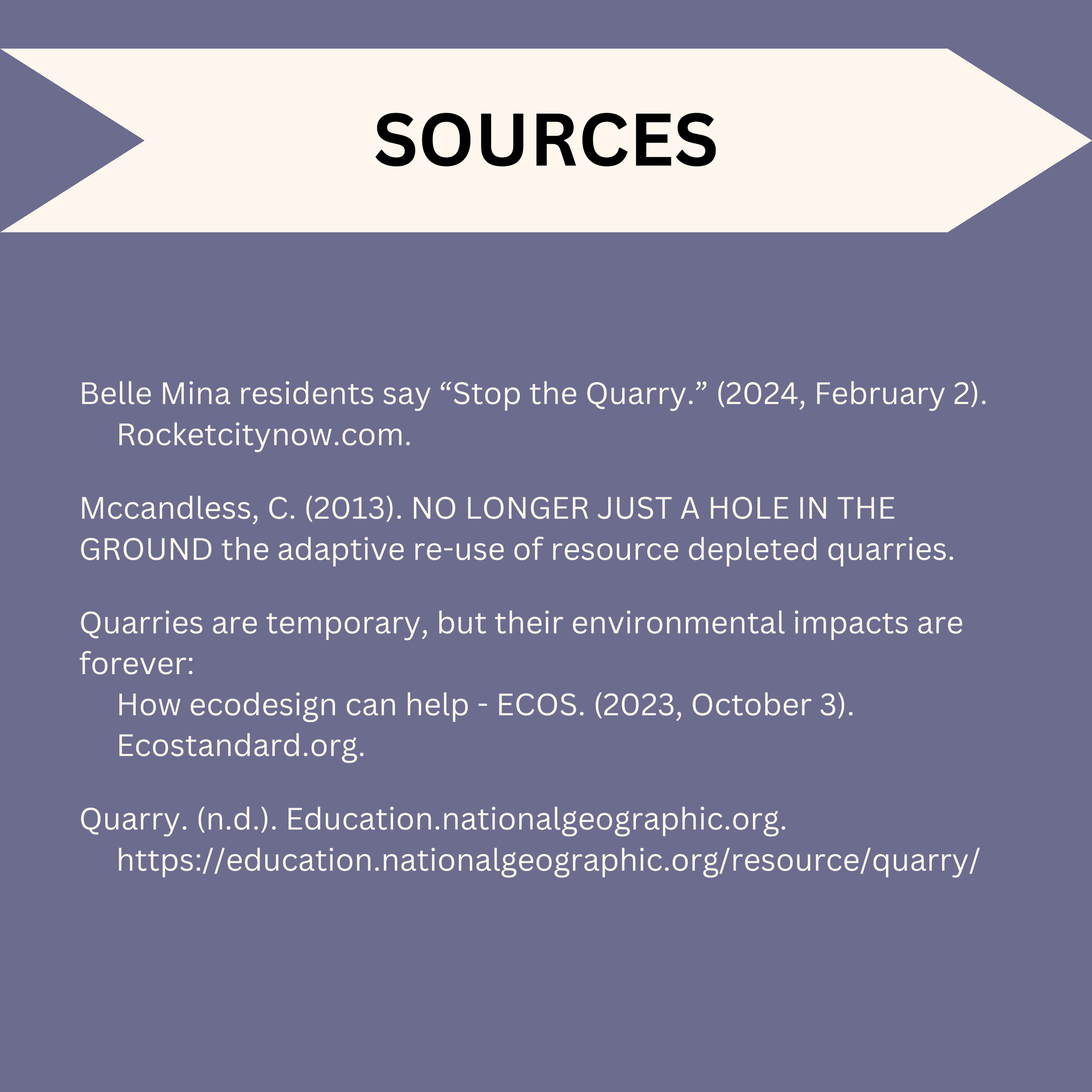Belle Mina residents resist quarry development, cite environmental and medical concerns
Trevor Hart 14 February, 2024
Belle Mina is just one example of a mounting trend: minority communities are disproportionately impacted by heavy industry practices. Quarries present a slew of environmental concerns, many of which have been raised by Belle Mina residents at recent town halls.
Photo courtesy of Flickr.
Residents of the small community of Belle Mina, Alabama stand unified in their continued movement to halt plans for the development of a quarry in their town. Belle Mina citizens were informed via public notice of the plans on December 1, and according to WHNT, most residents found out several days later via a neighbor.
The public notice, filed by the Alabama Department of Environmental Management (ADEM), details two permits: one by Athens-based contracting company Grayson Carter & Sons and another by a group known as Stone, LLC.
According to the ADEM filing, the first permit would “authorize the construction and operation of a limestone crushing, screening, and conveying circuit… at 7440 Mooresville Rd., Belle Mina, AL 35615.”
At a slew of town halls held periodically since December, Belle Mina community members have raised concerns regarding the quarry’s potential impact on the environment as well as their health, homes, and safety. Members of the community plan to address these concerns directly before the ADEM at a hearing scheduled for March 7 at Calhoun Decatur Health Center, WAFF reports.
Photo courtesy of WHNT.
Photo of a quarry similar to the proposed Belle Mina development., courtesy of Brittanica.
Photo courtesy of WHNT.
“Every stage of a quarry’s life cycle comes at an enormous environmental cost…”
Extensive research shows that quarries do, in fact, pose a threat to the environment in which they are developed. According to EcoStandard, “every stage of a quarry’s life cycle comes at an enormous environmental cost: loss of natural carbon sinks, eradication of biodiversity, noise and air pollution, and disruption of natural streams and springs.”
Residents fear Belle Mina does not have the necessary infrastructure to withstand the impact of heavy industry activity such as the blasting and crushing that takes place at a quarry.
Belle Mina Methodist Church Pastor Cody Gilliam tells WHNT his community is an “impoverished, majority African-American community” and the resistance to the quarry is an attempt to “give the community a voice.”
Coupled with their concern for the quarry’s potential impact on their homes and the Belle Mina environment, residents have expressed anxiety over the potential health ramifications of the quarry.
One town hall attendee and Limestone County resident, Dr. Janice Thornton-Manning, has warned residents of the specific health concerns associated with quarry activity.
According to AL.com, Dr. Thornton-Manning warned residents of a link between the operation of a quarry and an increased vulnerability to afflictions including lung cancer, respiratory diseases, and adverse pregnancies in the surrounding community.
Story Layer One: Interactive “Life Cycle of a Quarry” Flowchart & Infographics
A quarry was a foreign concept to me before embarking on this assignment. For many, the intricacies of the quarry development process and the specific ramifications of the quarry may be murky. As I read the EcoStandard article on quarries, the quote about “every stage of a quarry’s life” stuck out to me. Adding this layer to the story—personifying the very thing that would kill biodiversity in Belle Mina—put the story into a new context. For those, like me, unfamiliar with how quarries work, the infographics explain succinctly and descriptively how each phase of “life” for a quarry is environmentally destructive.
Telling the story from this angle also forces the reader to think about Belle Mina’s longevity and the long-term ramifications of a quarry. Environmental hazard is not only present when the quarry is active, but long after the quarry has been depleted and abandoned. When the quarry inevitably floods, the unnatural lake poses a major safety hazard to Belle Mina residents. This is, of course, in addition to the pollution, noise, and other inconveniences that will come long before the quarry is abandoned.
Infographics and charts also translate fluidly into social media content. This layer invites multi-channel promotion of the story. Posting the flowchart on social media may intrigue viewers and encourage them to follow the story from social media to online. Also, presenting what could potentially be brand-new information to the reader in this format makes it more digestible and comprehensible.


Story Layer Two: Environmental Racism Fact Sheet
The intention of this story layer is two-fold. First, the fact sheet is intended to reframe the Belle Mina quarry in relation to a larger story: the disproportionate effects of heavy industry activity on Black communities versus White communities in the United States. Second, the fact sheet is a commonly-used tool in public relations and brand marketing, an industry I plan to pursue. Adding this layer to the Belle Mina story was an exercise in creating content applicable to my career.
The Belle Mina quarry story exemplifies the issue of environmental racism in America. As Pastor Gilliam and other community members indicated, Belle Mina is an impoverished and predominantly-Black community, and the residents of Belle Mina are struggling to make their voices heard in resistance to the quarry. Community input was not even a consideration when the permits were filed, and the upcoming ADEM hearing is, essentially, after-the-fact. Given the circumstances, it is somewhat ironic that the prominent voices of this movement are white, including Pastor Gilliam and Dr. Thornton-Manning.
Reading about the EPA’s civil rights office and its procedures was shocking and reminiscent of the lack of consideration given to Belle Mina residents when slating the quarry project and the difficulty residents have had voicing their concerns over the past two months. Hopefully, the March hearing will prove a watershed moment in the Belle Mina narrative. Contextualizing the quarry in the trend of similar cases across the country may be eye-opening for some about the nefarious current of racism underscoring heavy industry in America.
Social Media Strategy: Multi-Channel Promotion of the Quarry-Story
As I mentioned earlier, the infographics I designed for the first layer of the story translate well into a social media post, but technical considerations must still be made when distributing these. If the infographics were to be “X-ed,” the information would either need to be condensed (as X limits you to 4 images per “X”) or the information would need to be presented in a thread. Personally, I would try to condense the information or forego the Cycle and Sources images and only use images 2-5. I don’t think a thread would be the right move given the short attention spans of most social media users.
The infographics naturally lend themselves to an Instagram post, and they are fairly suitable to Facebook as well. Not all platforms allow this, but if the post could be linked directly to the story, this would create an easy route for the viewer to move form the post to the online story. On the other hand, the fact sheet, in my opinion, does not lend itself so easily to Instagram. It is too much text for a story, and content would get cut off if it were a post. Breaking it into two or three bite-size pieces of information might be the best move.
Despite slight formatting incompatibility, I think the fact sheet would be very useful in the social media strategy for this story. The fact sheet introduces the viewer to the broader context surrounding the issue. If someone viewing our post lives in Iowa, they will not care if we lead with “Alabama town of 100 people resisting quarry development.” Showing them the greater issues at play and then relating it to environmental racism on the micro-level, however, is a viable way to present the story.



